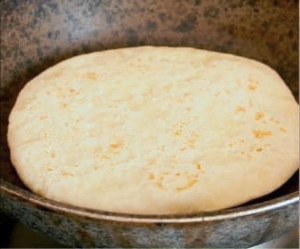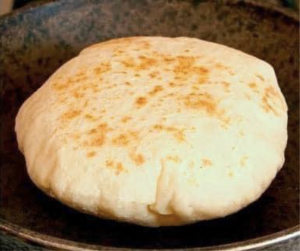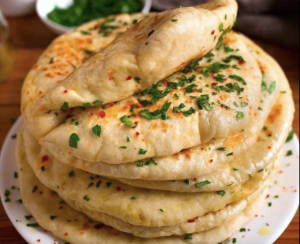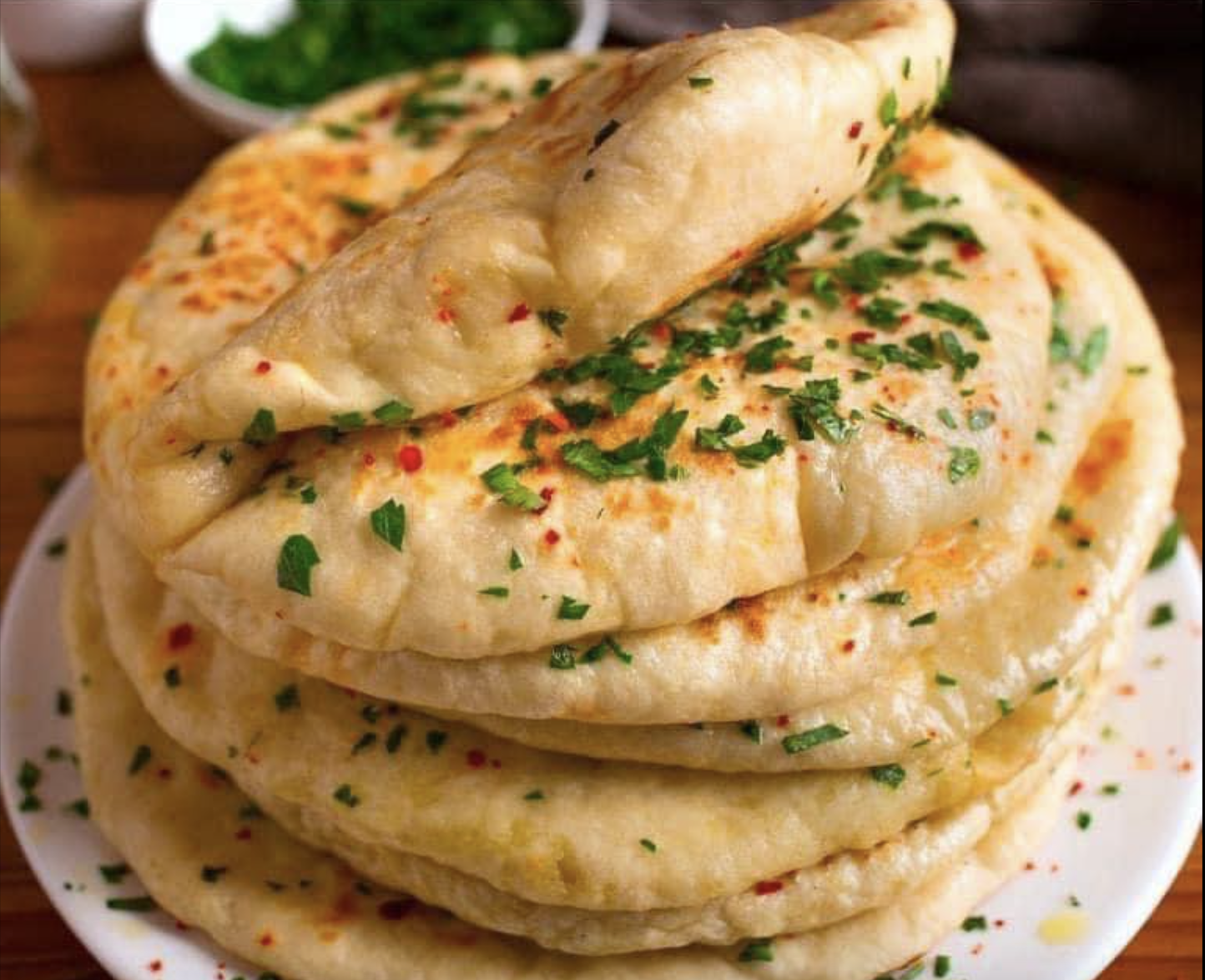Turkish milk bread, a delightful variation of flatbread, is renowned for its soft texture and rich flavor. This bread, deeply rooted in Turkish cuisine, offers a unique taste experience, different from other bread varieties. In this article, we’ll explore the intricacies of making Turkish milk bread in a pan, providing a comprehensive guide to this culinary delight.
Introduction to Turkish Milk Bread in a pan
Turkish milk bread, known for its softness and rich flavor, is a staple in many households. Unlike regular flatbreads, this bread incorporates milk and dry yeast, enhancing its taste and texture. Its popularity spans across various cultures, each adding their unique twist to this versatile bread.
For more insights into the health benefits of homemade bread like Turkish milk bread, check out Healthline’s article on the nutritional aspects of bread.
The Basics of Making Flatbread
Flatbreads, in their many forms, are a global phenomenon. From the Indian naan to the Middle Eastern pita, these breads are cherished for their simplicity and taste. Turkish milk bread stands out in this category for a few reasons:
- Milk-Enriched Dough: The addition of milk creates a softer, more pliable dough.
- Flavorful Yeast: Dry yeast not only helps the bread rise but also adds a distinct flavor.
For those interested in exploring other unique bread recipes, check out Rice Bread Without Oven: A Delightful and Healthy Alternative.
Making Turkish Milk Bread in a Pan: A Step-by-Step Guide
Description
A soft, fluffy bread enriched with milk and yeast, perfect for a variety of meals or enjoyed on its own.
Ingredients for Authentic Turkish Milk Bread
- 1 cup warm milk
- 1 tablespoon dry yeast
- 2 tablespoons sugar
- 3 cups all-purpose flour
- 1 teaspoon salt
- 2 tablespoons olive oil
- 2 tablespoons melted butter
- Fresh parsley, chopped (optional)
Instructions
- Dough Preparation: In a large bowl, mix warm milk, dry yeast, and sugar. Let it sit for 5 minutes until frothy.
- Mixing Ingredients: Add flour and salt to the yeast mixture. Mix until a shaggy dough forms.
- Kneading: Knead the dough on a floured surface until smooth. Incorporate olive oil during the kneading process.
- Resting the Dough: Cover the dough and let it rest for 1 hour until it doubles in size.
- Shaping: Divide the dough into equal portions and roll each into a ball. Flatten each ball into a disc.
- Cooking: Cook each disc in a preheated pan over medium-high heat until puffed and golden on both sides.
- Finishing Touches: Brush each bread with melted butter and sprinkle with chopped parsley.

Notes
- Ensure the milk is warm to activate the yeast effectively.
- The dough can be flavored with herbs or spices for variation.
Details
- Prep Time: 15 minutes
- Cook Time: 15 minutes
- Total Time: 1 hour 30 minutes
- Yield: 6 servings
- Category: Bread
- Method: Pan Cooking
- Cuisine: Turkish
- Diet: Vegetarian

Nutritional Facts (per serving)
- Calories: 250
- Carbohydrates: 40g
- Protein: 6g
- Fat: 7g
- Saturated Fat: 2g
- Cholesterol: 10mg
- Sodium: 400mg
- Fiber: 2g
- Sugar: 4g

For a perfect main course to accompany this bread, consider trying the Roasted Garlic Butter Steaks Recipe: A Flavorful Culinary Journey.
Cooking Your Turkish Flatbread to Perfection
To ensure your Turkish milk bread turns out perfectly every time, here are some expert tips:
- Temperature Control: The temperature of the milk should be warm but not hot, ideally around 105-110˚F, to properly activate the yeast.
- Kneading: Adequate kneading is crucial. The dough should be smooth and elastic before resting.
- Resting Time: Allow the dough to rest until it doubles in size. This is essential for a light and fluffy texture.
- Cooking on the Pan: Cook the bread on a medium-high heat to achieve a golden-brown crust without burning.
- Freshness: Turkish milk bread is best enjoyed fresh, but it can be stored and reheated while still retaining its delicious taste.
Turkish milk bread in a pan: the soft and tasty spiced bread! – YouTube
This YouTube video provides a visual and detailed guide on how to make Turkish milk bread in a pan. It covers the entire process, from preparing the dough to cooking, making it an excellent resource for those who prefer learning through videos.
Turkish Bread Recipe – Cook with Nabeela
This link leads to a detailed recipe for Turkish bread, known as bazlama, on Cook with Nabeela’s website. The recipe is described as pillowy soft, fluffy, and unique, providing another excellent alternative for readers interested in exploring different styles of Turkish bread.
Serving Suggestions for Pan-Cooked Turkish Bread
Turkish milk bread is incredibly versatile and can be paired with a variety of dishes:
- As a Side: Serve with soups, stews, or curries.
- For Breakfast: Enjoy with butter, jam, or honey.
- Sandwiches: Use as a base for sandwiches filled with your favorite ingredients.
Storage and Reheating
- Storing: Keep in an airtight container for up to 3 days at room temperature.
- Reheating: Warm in a dry pan or oven for a few minutes to refresh the bread.
FAQs
- Can I use whole wheat flour? Yes, but the texture will be denser. You may need to adjust the amount of milk.
- Is it possible to freeze Turkish milk bread? Yes, wrap it well and freeze for up to 1 month. Thaw and reheat before serving.
Exploring the Delights of Pan-Cooked Turkish Bread
Turkish milk bread is not just a culinary delight but also a representation of Turkey’s rich cultural heritage. This bread, often found in Turkish households, is a symbol of hospitality and warmth. Sharing this bread with family and friends is a way of bringing people together, embodying the communal spirit of Turkish culture.
Sustainability and Health Benefits
In an era where health and sustainability are paramount, Turkish milk bread offers several benefits:
- Homemade Goodness: By making this bread at home, you avoid the preservatives and additives found in store-bought bread.
- Nutritional Value: Milk adds calcium and protein, making this bread a healthier choice.
- Versatility: This bread can be adapted to various dietary needs, such as using plant-based milk for a vegan version.
Turkish Milk Bread Recipe: Traditional Techniques and Tips
While the traditional recipe is delightful, don’t hesitate to get creative:
- Add Seeds: Incorporate sesame or poppy seeds for added texture and flavor.
- Herb Infusions: Mix in herbs like rosemary or thyme for a fragrant twist.
- Sweeten It Up: Add a bit of cinnamon and sugar for a sweet version.
Pairing with Turkish Cuisine
To fully appreciate Turkish milk bread, pair it with traditional Turkish dishes:
- With Mezze: Serve as part of a mezze platter.
- Dips and Spreads: Perfect with hummus, baba ganoush, or tzatziki.
- Grilled Meats: Complements the flavors of kebabs and grilled vegetables.
Celebrating Diversity in Bread Making
Turkish milk bread is a testament to the diversity and creativity in bread making across cultures. Each culture brings its unique flavors and techniques to the art of bread making, enriching our global culinary landscape.
Conclusion
Turkish milk bread in a pan is more than just a bread; it’s a testament to the rich and diverse world of flatbreads. Its unique preparation method and the inclusion of milk and yeast set it apart, making it a must-try for any bread enthusiast.
To delve deeper into the origins and evolution of Turkish cuisine, which includes Turkish milk bread, visit this comprehensive guide on the history of Turkish cuisine.
By understanding the ingredients, following the recipe, and applying the tips provided, you can create a delicious, soft, and flavorful Turkish milk bread that will be a hit at any dining table.

